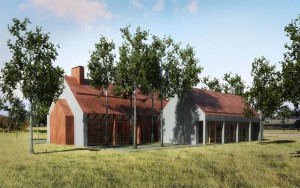As the world tries to move on from the Covid pandemic, there is anecdotal evidence that we are increasingly seeking life outside the city. Building a new home in the countryside and becoming a rural dweller may seem like a impossible dream but it is becoming an increasing reality for some. One reason is that the National Planning Policy Framework (NPPF) allows new, isolated homes to built in rural areas, if they are of exceptionally high quality of design. We explain the rules below.
The right house in the right place
Current NPPF policy recognises that new housing can be very homogenous – the ‘cookie cutter’ developments that have been all too common across the country. This has led to a push to improve the design quality of new housing, particularly in terms of environment considerations.
In the new NPPF, paragraph 79 encourages local authorities not to approve new developments on unbuilt land in the countryside. However, there are some important exceptions to this rule. These include where a house is designed to exceptionally high quality, helping to “raise standards of design more generally in rural areas”. In addition, a house would have to “significantly enhance its immediate setting, and be sensitive to the defining characteristics of the local area”.
No single route to success
The requirement for “truly outstanding or innovative” design means that there is no ‘right’ type of house that would receive planning permission. Instead, there is the need to focus on the individuality of a project and be aware that it is likely to be a long and intensive process.
It is clear that the sustainable design elements of the new build are key. Using natural, local materials can help the property to ‘take root’ in its local context. Equally important is how the property would positively impact the site, complementing and enhancing the existing landscape. Planning committees are more likely to approve houses which ‘belong’ in a landscape and use sustainable building technologies that are unique to the site.
Chances of success?
It is worth noting that the number of applications and the corresponding success rates are both quite low – a study found only 66 approvals between 2012 and 2018 (this was a 58% success rate, compared to an 88% success rate across all residential applications). Each case tends to have it own unique circumstances and the rules may be applied differently in different local authority areas. Engaging the local authority and any local communities or stakeholders early on in the project is very important. This will help to ensure that those making the final decisions about the build are confident in the quality, suitability and acceptability of the design and location.
We considered a lot of these aspects in the design of our Clogher Forest Village project.

